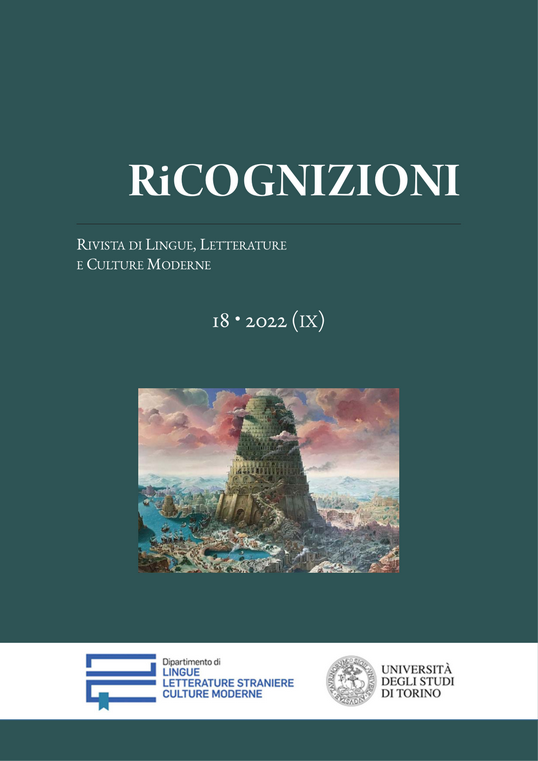Linguistics and Classical Tradition as Sources for Tolkien’s Glottopoiesis
DOI:
https://doi.org/10.13135/2384-8987/7132Keywords:
Quenya, Latin, orthography, phonetics, grammarAbstract
Tolkien was not only a successful author of one of the most complex fantasy lore available in Western literature, but he was also a gifted philologist whose interests ranged from the most disparaged languages, such as Germanic languages, Finnish, Celtic languages and also Latin and Greek. For the creation of his glottopoietic masterpieces – Quenya and Sindarin – he followed an a posteriori process, moving from the templates represented by natural languages, such as Finnish, Germanic languages, Welsh and also Classical languages. Focussing on Quenya, in particular, it is noticeable how this invented language possesses a few relevant features that makes it similar to Latin not only according to the narrowest linguistic perspective but also according to a broader perspective, including the sociolinguistic viewpoint. Some of these features have been summarized and presented in this paper, showing how Tolkien not only reproduced – according to his phonoaesthetic taste – linguistic feature that were closer to Latin than to any other language, but he also reproduced and mimicked the relationships that Latin had with other languages during different periods of its existence.
Downloads
Published
How to Cite
Issue
Section
License
RiCognizioni is published under a Creative Commons Attribution 4.0 International License.
With the licence CC-BY, authors retain the copyright, allowing anyone to download, reuse, re-print, modify, distribute and/or copy their contribution. The work must be properly attributed to its author.
It is not necessary to ask further permissions both to author or journal board.








